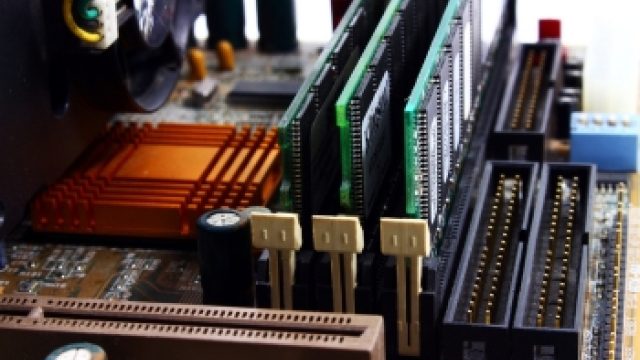When it comes to building or upgrading your computer, one crucial aspect you should pay close attention to is RAM speed.
RAM, or Random Access Memory, plays a vital role in the overall performance of your system. But with the myriad of RAM options available on the market, it’s easy to get lost in the technical jargon.
Fear not! In this article, we’ll break down everything you need to know about RAM speed in a friendly and easy-to-understand manner.
Understanding RAM Speed
RAM speed, often referred to as RAM frequency, determines how quickly your computer can access and transfer data stored in the RAM. It is measured in megahertz (MHz) and typically comes in various frequencies like 2400 MHz, 3200 MHz, and even higher.
The general rule of thumb is that higher RAM speeds translate to better performance. However, the real question is, how much RAM speed do you actually need?
Factors Influencing RAM Speed Requirements
The RAM speed you should get depends on several factors. One of the primary factors is your computer’s intended usage.
If you use your computer for basic tasks like web browsing, email, and word processing, then standard RAM speeds around 2400 to 2666 MHz will suffice.
However, if you’re a power user, indulge in heavy multitasking, or run memory-intensive applications like video editing software or complex simulations, then higher RAM speeds, like 3200 MHz or beyond, will offer a noticeable performance boost.
Another crucial factor is the processor you’re using. Modern processors, especially those from AMD’s Ryzen and Intel’s Core series, are optimized to take advantage of higher RAM speeds.
Pairing these processors with fast RAM can unlock their full potential and lead to significant performance gains.
Related Article: 1333 MHz vs 1600 MHz RAM: Unveiling the Performance
Real-World Performance Impact
Now, you might be wondering, “Does RAM speed really make that big of a difference?” The answer is yes, but it’s essential to understand that the impact of RAM speed on real-world performance varies depending on the specific tasks you perform.
For instance, in gaming, the difference between low and high RAM speeds might not be as noticeable as the difference between having sufficient RAM and not having enough.
In scenarios where large datasets need to be processed quickly, like content creation or scientific simulations, faster RAM can make a substantial difference in overall efficiency.
Compatibility and Motherboard Considerations
Before rushing to buy the fastest RAM available, it’s crucial to consider your motherboard’s compatibility. Not all motherboards support the highest RAM speeds, so make sure to check the motherboard’s specifications.
Additionally, if you install RAM with a higher frequency than what your motherboard supports, it will automatically run at the motherboard’s maximum supported speed. Therefore, investing in ultra-fast RAM might not be worthwhile if your motherboard can’t fully utilize it.
Overclocking RAM
For the tech-savvy enthusiasts, there’s an option to overclock RAM. Overclocking allows you to run your RAM at speeds higher than its default specifications. While this can lead to better performance, it comes with some risks.
Overclocking can cause instability, crashes, or even damage your RAM and other components if not done correctly. If you’re not experienced with overclocking, it’s best to avoid it or seek guidance from experienced users.
Gaming Performance and RAM Speed
Gamers often wonder whether investing in high-speed RAM is worth it.
While the impact of RAM speed on gaming performance isn’t as significant as, say, upgrading your graphics card, it can still make a difference in certain games.
Some games, especially those that are open-world or heavily modded, benefit from faster RAM speeds as they need to load a vast amount of data quickly.
However, for most mainstream games, the difference in performance between standard and high-speed RAM might not be immediately noticeable.
Related Article: Can You Use RAM with Different MHz in Your Computer
Content Creation and RAM Speed
For content creators, such as video editors, graphic designers, and 3D modelers, RAM speed can be a game-changer.
These applications often handle large files and complex rendering tasks, which demand quick data access.
Faster RAM allows these programs to work more efficiently, reducing rendering times and improving overall productivity. If content creation is a significant part of your computer usage, investing in high-speed RAM is a wise decision.
Upgrading vs. New Build
If you’re considering upgrading your computer’s RAM, it’s essential to assess the existing components and your performance needs.
If your current system meets your requirements and only lacks sufficient RAM, upgrading the RAM can be a cost-effective solution.
However, if your processor, graphics card, or other components are outdated and don’t support higher RAM speeds, it might be more beneficial to invest in a new build altogether.
Future-Proofing and Longevity
When choosing RAM speed, it’s worth considering your system’s future needs. As software and applications become more demanding, having faster RAM can provide some degree of future-proofing.
While you don’t need to buy the most cutting-edge RAM available, opting for a reasonably fast speed that aligns with your system’s capabilities can ensure your computer remains competent for years to come.
Budget-Friendly Options
High-speed RAM can be expensive, especially at the top end of the market. However, that doesn’t mean you have to break the bank to get good performance.
As mentioned earlier, for basic tasks, standard RAM speeds are more than adequate. Additionally, shopping during sales or looking for deals can help you snag faster RAM at a more affordable price.
Cooling and Performance
When discussing RAM speed, it’s essential to touch upon the issue of heat. High-speed RAM tends to generate more heat during operation.
While this isn’t a significant concern for most users, those who are heavily overclocking or have a compact build should pay attention to cooling. Proper airflow and cooling solutions can help maintain stable performance even with faster RAM.
Case Studies
To illustrate the real impact of RAM speed, let’s take a look at a couple of case studies. We’ll examine two users: Alex, who primarily uses the computer for gaming and web browsing, and Emily, a professional video editor.
Case Study 1: Alex Alex built a gaming PC with a mid-range processor and a powerful graphics card. He initially opted for 2400 MHz RAM, and his system performed admirably in most games.
Curious about the potential gains, he upgraded to 3200 MHz RAM. While he noticed a slight improvement in some open-world games, the overall difference wasn’t significant enough to warrant the upgrade cost.
Case Study 2: Emily Emily, a freelance video editor, dealt with lengthy rendering times while working on her projects.
She upgraded from 2400 MHz to 3600 MHz RAM, and the difference was astounding. Rendering times significantly decreased, and she could work more efficiently on her complex projects.
FAQs About What Ram Speed Should I Get
What is a good RAM speed?
A good RAM speed depends on your specific needs and use cases. For general tasks like web browsing and office work, 2400MHz to 3200MHz is sufficient.
However, for more demanding tasks like gaming and content creation, higher speeds, such as 3600MHz or even 4000MHz, can provide better performance.
Is 3200MHz a good RAM speed?
Yes, 3200MHz is considered a good RAM speed for most applications. It offers a good balance between performance and price, making it a popular choice for gaming and everyday tasks. It provides enough speed to handle most applications efficiently without breaking the bank.
What RAM speed should I get for gaming?
For gaming, a RAM speed of 3000MHz to 3600MHz is generally recommended. Faster RAM can improve frame rates and reduce loading times in games, especially in CPU-intensive titles.
However, beyond a certain point, the performance gains become marginal, so consider your budget and overall system configuration.
Is 3200MHz RAM good in 2023?
Yes, 3200MHz RAM is still a viable option in 2023. While higher RAM speeds have become more common, 3200MHz remains an excellent choice for most users.
It offers a good balance of performance, compatibility, and cost-effectiveness, making it a reliable option for various computing needs.
Is it OK to run RAM at full speed?
Yes, it is generally okay to run RAM at its full speed, especially if your system is stable and properly cooled. Modern RAM modules are designed to operate at their advertised speeds without any issues.
However, make sure that your motherboard and CPU support the chosen RAM speed to ensure compatibility.
Is faster RAM better for gaming?
Yes, faster RAM can positively impact gaming performance, but the extent of the improvement depends on the overall system configuration.
In CPU-bound scenarios, faster RAM can lead to higher frame rates and smoother gameplay. However, the difference might not be as noticeable in GPU-bound situations.
Is 3600MHz worth it over 3200?
Whether 3600MHz is worth it over 3200MHz depends on your specific needs and budget. While 3600MHz can offer slightly better performance, the real-world difference may not be significant for most users.
If the price difference is minimal and your system supports it, opting for 3600MHz can be a good choice.
Which is better, 3200MHz, or 2666MHz?
In terms of performance, 3200MHz is better than 2666MHz. The higher speed allows for faster data transfer, resulting in improved system responsiveness and application loading times.
However, the difference might not be drastic in everyday tasks, so consider your budget and specific use case.
Is 32 GB RAM overkill?
Whether 32 GB RAM is overkill depends on your usage patterns. For standard office work and web browsing, 32 GB is excessive.
However, for demanding tasks like video editing, 3D rendering, and running virtual machines, 32 GB can significantly improve multitasking and overall system performance.
Does more RAM increase FPS?
In most cases, more RAM alone doesn’t directly increase FPS (frames per second) in games. FPS is primarily influenced by the graphics card and CPU performance.
However, having sufficient RAM (e.g., 16 GB or more) ensures that the system can handle background processes and game assets efficiently, preventing potential bottlenecks.
Does RAM speed increase FPS?
RAM speed can impact FPS, but the effect is generally modest compared to other hardware components. In CPU-intensive games, faster RAM can provide a slight boost to FPS by reducing data transfer bottlenecks.
However, the difference in FPS between different RAM speeds is often minimal in real-world scenarios.
Final Thoughts About What Ram Speed Should I Get
Choosing the right RAM speed depends on understanding your computer usage, future needs, and the capabilities of your components. For most users, a standard RAM speed should suffice, while power users and content creators may benefit from higher speeds.
Remember to consider compatibility, budget, and cooling when making your decision. With the right RAM speed, you can unlock the full potential of your computer and enjoy a smooth and responsive computing experience.


